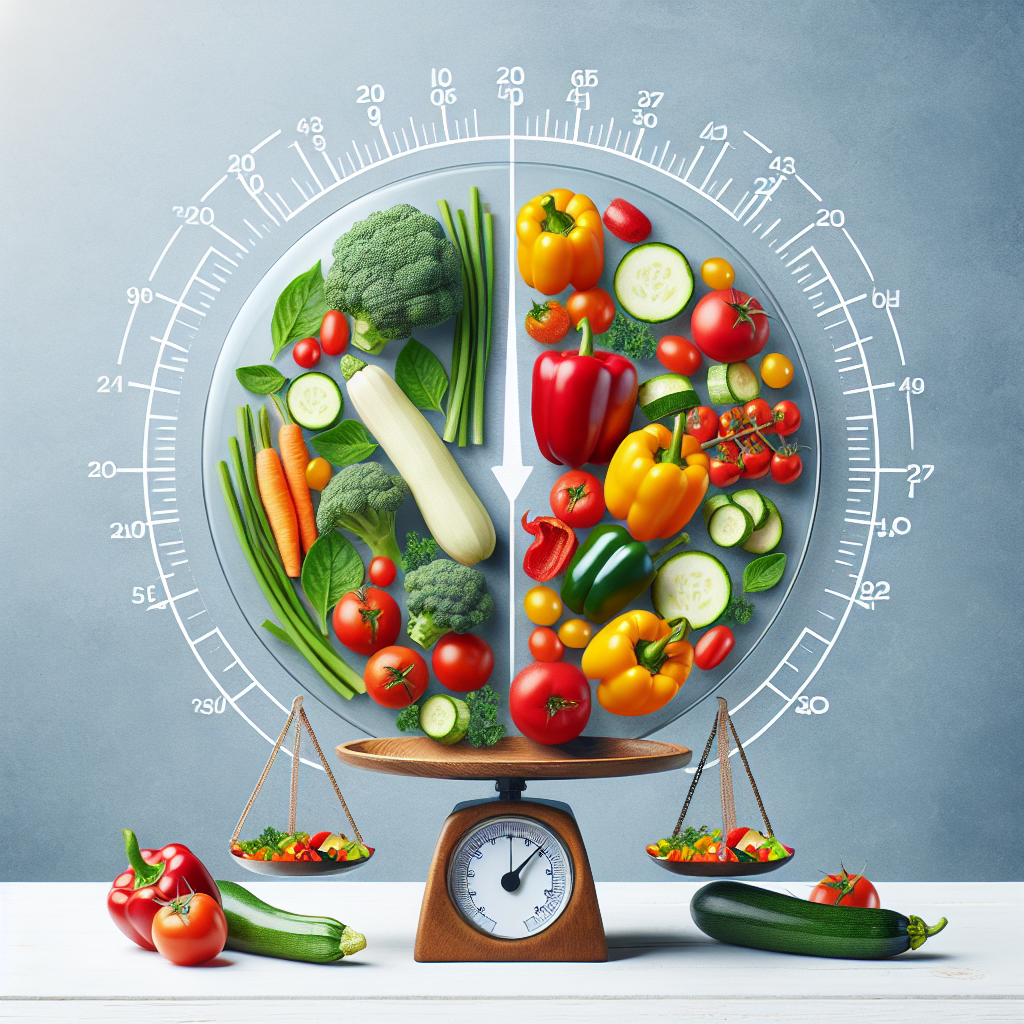Boost Satiety: High-Volume, Low-Calorie Foods
Introduction to High-Volume, Low-Calorie Foods
In a world where obesity and weight management are significant concerns, finding effective strategies to manage hunger without compromising nutritional intake is crucial. One such strategy is incorporating high-volume, low-calorie foods into one’s diet. These foods are not only nutrient-rich but also help in enhancing satiety, which can be a game-changer for those looking to maintain or lose weight. This article delves into the concept of high-volume, low-calorie foods, explores their benefits, and provides practical tips on how to incorporate them into your daily diet.
Understanding Satiety and Its Importance
Satiety refers to the feeling of fullness and satisfaction that one experiences after eating. It plays a vital role in regulating food intake and energy balance. A diet that enhances satiety can help reduce overall calorie intake, making it easier to maintain or lose weight. The key to achieving satiety lies in choosing foods that provide volume without adding excess calories.
The Science Behind High-Volume, Low-Calorie Foods
High-volume, low-calorie foods are often rich in water and fiber, both of which contribute to the feeling of fullness. Water-rich foods add bulk without adding calories, while fiber slows digestion and prolongs the sensation of fullness. These foods typically have low energy density, meaning they provide fewer calories per gram compared to high-energy-dense foods like processed snacks and sugary treats.
Water Content
Water is a key component of many high-volume foods, such as fruits and vegetables. Foods with high water content not only hydrate the body but also fill the stomach, triggering stretch receptors that signal fullness to the brain. For instance, watermelon, cucumbers, and lettuce are over 90% water, making them excellent choices for those looking to manage their weight.
Fiber Content
Fiber, particularly soluble fiber, plays a significant role in increasing satiety. It absorbs water, forming a gel-like substance in the digestive tract that slows down digestion. This not only keeps you feeling full for longer but also helps regulate blood sugar levels. Foods like oats, beans, lentils, and many whole grains are high in fiber and can be a valuable addition to a satiety-promoting diet.
Benefits of High-Volume, Low-Calorie Foods
Weight Management
Incorporating high-volume, low-calorie foods into your diet can aid in weight management by reducing overall calorie intake. By filling up on these foods, you are less likely to overeat or indulge in high-calorie, nutrient-poor foods. This can create a calorie deficit, essential for weight loss.
Nutrient Density
Many high-volume, low-calorie foods are also nutrient-dense, meaning they provide essential vitamins, minerals, and antioxidants that support overall health. For example, leafy greens like spinach and kale are low in calories but rich in nutrients like vitamin K, vitamin A, and iron.
Improved Digestion
The high fiber content of these foods promotes healthy digestion by enhancing bowel regularity and preventing constipation. Fiber also supports a healthy gut microbiome, which is linked to improved metabolism and reduced inflammation.
Enhanced Satiety and Reduced Cravings
Consuming foods that promote fullness can reduce cravings for unhealthy snacks and sweets. This is particularly beneficial for those who struggle with emotional or stress eating, as feeling satisfied can reduce the urge to snack between meals.
Examples of High-Volume, Low-Calorie Foods
Fruits and Vegetables
Fruits and vegetables are the cornerstone of a high-volume, low-calorie diet. They are naturally low in calories and high in water and fiber. Some excellent choices include:
– **Leafy Greens**: Spinach, kale, and lettuce are low in calories and high in nutrients.
– **Berries**: Strawberries, blueberries, and raspberries are not only low in calories but also high in antioxidants.
– **Cruciferous Vegetables**: Broccoli, cauliflower, and Brussels sprouts are filling and packed with vitamins and minerals.
– **Citrus Fruits**: Oranges, grapefruits, and lemons are hydrating and rich in vitamin C.
Whole Grains and Legumes
Whole grains and legumes provide sustained energy and are high in fiber, making them excellent for satiety:
– **Oats**: A great source of soluble fiber, oats can be used in various dishes, from breakfast porridge to savory meals.
– **Brown Rice and Quinoa**: These grains are nutrient-dense and provide long-lasting energy.
– **Lentils and Beans**: High in protein and fiber, they are versatile ingredients for soups, salads, and stews.
Soups and Broths
Soups and broths are excellent choices for increasing meal volume without adding many calories. Opt for clear broths and vegetable-based soups that are low in fat and sodium.
Incorporating High-Volume, Low-Calorie Foods into Your Diet
Plan Your Meals Around Vegetables
Start your meals with a salad or vegetable soup to increase fullness before moving on to the main course. Make vegetables the star of your plate rather than just a side dish.
Snack Wisely
Choose fruits, vegetables, or a handful of nuts for snacks instead of processed foods. Carrot sticks, apple slices, and celery with hummus are excellent options that provide nutrients without excessive calories.
Experiment with Cooking Methods
Steaming, grilling, and roasting can enhance the flavors of vegetables without adding extra calories from oils or sauces. Experiment with herbs and spices to add flavor without calories.
Stay Hydrated
Sometimes, thirst is mistaken for hunger. Ensure you drink enough water throughout the day, which can also help maintain satiety and prevent overeating.
Conclusion
High-volume, low-calorie foods are an effective way to boost satiety and manage weight without feeling deprived. By focusing on foods rich in water and fiber, you can enjoy larger portions that satisfy hunger while consuming fewer calories. Incorporating these foods into your daily diet not only supports weight management but also provides essential nutrients for overall health and well-being. Embrace the power of high-volume, low-calorie foods and take a step towards a healthier, more balanced lifestyle.















Add comment